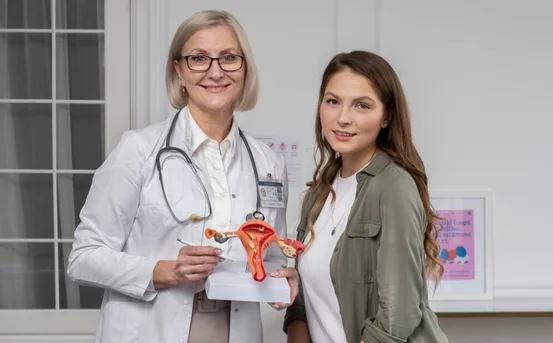Lung Volume Reduction Surgery (LVRS) is a procedure that is designed to improve the breathing of patients with severe chronic obstructive pulmonary disorder (COPD) specifically the condition known as emphysema. Before having this life-changing operation patients need to undergo an extensive diagnosis for lung volume surgery to determine if they’re appropriate candidates. An accurate diagnosis for lung volume surgery is crucial for better results as well as long-term results.
What Is Lung Volume Reduction Surgery (LVRS)?
Understanding of diagnosis for lung volume surgery
Lung Volume Reduction Surgery is a process that involves the damaged, non-functioning parts of the lungs, usually due to the condition emphysema are removed surgically. The objective is to allow healthy lung tissue to expand more effectively, thus improving the lung’s function and breathing.
But not all patients with emphysema will be a suitable candidate for this type of surgery. An accurate diagnosis and evaluation are necessary to determine whether the benefits are greater than the risk.
Why Is Diagnosis Important Before Lung Volume Surgery?
The effectiveness of LVRS is heavily dependent on selecting the most suitable patients. Some patients can benefit tremendously however, others may not notice any improvement or experience more complications.
A thorough diagnosis is essential:
- Find appropriate patients for surgery
- Reduce post-operative risks and complications
- Improve the long-term function of your respiratory system.
- Avoid unnecessary surgery procedures
A proper diagnosis can help doctors determine how advanced the condition is as well as the general lung health, and whether or not the patient can manage the surgical and rehabilitation procedure.
Who Might Need Lung Volume Reduction Surgery?
The most common patients for LVRS are those who have been who have:
- Emphysema that is severe, typically caused by smoking cigarettes
- A persistent shortness of breath even after taking medications
- Lungs that are hyperinflated (trapped air inside the lungs)
- Low quality of life due to breathing problems
- Insensitive in other COPD treatments, such as bronchodilators or rehabilitation of the pulmonary system
Diagnostic Process for Lung Volume Reduction Surgery
The diagnostic stage is multi-step and comprises a combination of testing for lung function as well as physical tests.
Pulmonary Function Tests (PFTs)
The Pulmonary Function Test is essential to determine the extent to which your lungs function. These tests can help you determine:
- FEV1 (Forced Expiratory Volume) It measures how much air you exhale over a single second.
- FVC (Forced Vital Capacity) Total quantity of air exhaled
- The TLC (Total Lung Capacity) to determine whether your lungs are inflated.
- DLCO (Diffusing Capacity) is a measure of how well oxygen enters the blood
Patients who suffer from an airflow obstruction that is severe, low FEV1, or TLC that is high are more likely for LVRS.
Chest Imaging (CT Scan)
An ultra-high resolution CT scan is used to examine the lungs’ structure. This aids doctors:
- Find affected areas of the lungs
- Examine whether the emphysema is dominant in the upper lobe
- Examine the lungs for any fibrosis, nodules or any infections
The imaging results are vital in determining the most suitable lung tissue to eliminate.
Arterial Blood Gas Analysis
This test determines the levels of carbon dioxide and oxygen in your blood. It can help determine:
- Hypoxemia that is severe (low oxygen level)
- Hypercapnia (elevated the levels of carbon dioxide)
Patients who have very low levels of oxygen or high CO2 might not be the ideal candidate.
Exercise Tolerance Test (6-Minute Walk Test)
The test evaluates your functioning and how your lungs function when you exercise. Patients are required to walk for six minutes while their heart rate, oxygen levels and breathing rate are measured.
This test is helpful in:
- Find out the severity of disability
- Predict the outcomes of post-surgery procedures.
- Assess the need for supplemental oxygen
Cardiac Evaluation
Because COPD patients typically have other heart issues A complete cardiac check-up is required. This can include:
- Electrocardiogram (ECG)
- Echocardiogram
- Stress testing
The clearance of the heart is crucial in order to ensure that the patient can cope with the physical stress of surgery.
Pulmonary Rehabilitation Assessment
A majority of hospitals require patients go through a pulmonary rehab program prior to surgery. This helps improve breathing techniques muscles strength, as well as overall lung function. The rehabilitation progress of the patient provides insight into how they will recover after surgery.
Nutritional and Psychological Evaluation
Nutritional health is crucial to healing. Patients who are overweight or malnourished may require nutritional support prior to surgery. Also, psychological assessments determine the level of mental fitness, particularly for those suffering from depression or anxiety as a result of chronic illnesses.
What Happens After the Diagnosis?
After having completed all examinations, the multidisciplinary group comprising pulmonologists, thoracic surgeons physical therapists and radiologists – reviews the results.
Patients are classified as follows:
- Ideal candidates
- Borderline candidates (who might require rehabilitation or medical therapy in the beginning)
- Non-candidates (if the risks of surgery outweigh the benefits)
If the patient is approved, the patient is scheduled to undergo Lung Volume Reduction Surgery, or via VATS (Video-Assisted Thoracic Surgery) or sternotomy, based on the surgeon’s advice.
Alternative Options If Not Eligible
If you’re not a suitable candidate for LVRS There are alternative options for treatment:
- Bronchoscopic Lung Volume Reduction (BLVR) is a minimally invasive procedure that uses coils or valves
- Long-term oxygen therapy
- Management of medications
- Rehabilitation of the pulmonary system
- In extreme circumstances
Conclusion
The determination of the procedure to reduce lung volume is an essential process that will ensure only the appropriate patients are undergoing the procedure. With a mix of lung function tests as well as scans, blood analysis and general health assessments doctors are able to make an informed choice that ensures patient safety and success in the surgery.
If you or someone close to you suffers from emphysema that is severe or COPD consult an pulmonologist to be assessed in the direction of Lung Volume Reduction Surgery. A clear diagnosis can be the first step to breathing better and living longer.























